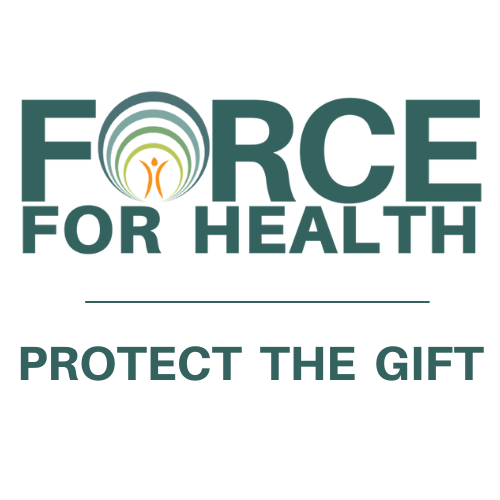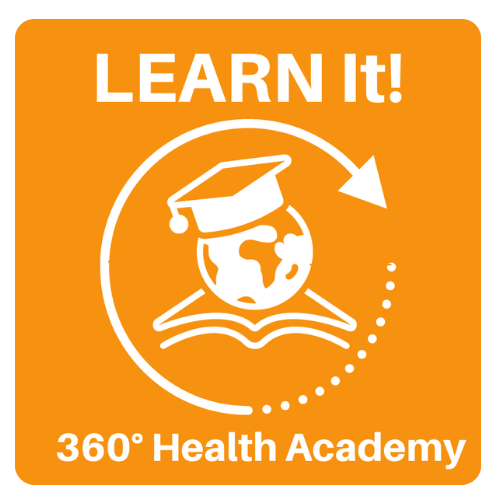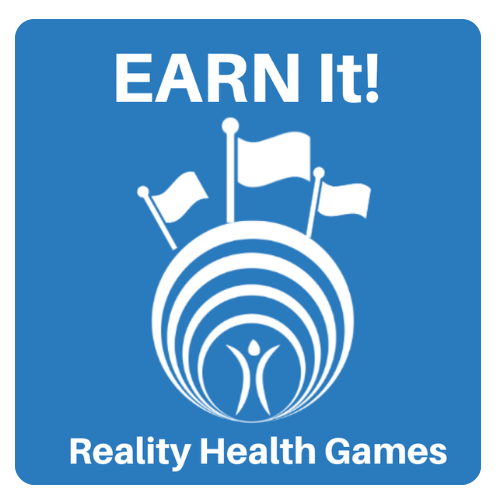Physical inactivity is one of the leading risk factors for many diseases, including cancer, according to the World Health Organization (WHO).
Physical inactivity has a 25.3% prevalence in the US, where about 60% of adults say they are physically inactive as of 2020, according to the CDC.
That’s why the CDC launched a campaign to get people moving.
Active People, Healthy Nation is striving to help 27 million Americans be more physically active by 2027 and getting 10 million adults and 2 million young people to meet the minimum aerobic physical activity guideline.
Salud America! is stepping up to help by partnering with the initiative’s Moving Matters campaign to get the word out.
Let’s dig into some of the short-term and long-term benefits of regular physical activity and discuss some ways to keep you on the right track!
Need for Physical Activity in Latinos
Cancer and heart disease are two of the leading causes of death in Latinos, according to data from the CDC.
Due to social and economic inequities in healthcare, housing, education, and access to healthy foods and safe places to play and be active, Latinos have been disproportionately impacted by risk factors for these diseases and thus suffer worse health outcomes.
Physical inactivity and poor diet are among the most common modifiable risk factors for developing conditions such as obesity and diabetes associated with these diseases.
What’s more, obesity and diabetes are becoming more prevalent in Latino children.
Obesity, which is linked to a higher risk for diabetes, impacts 26.2% of Latino children, who are 1.8 times likely to be obese than white children.
With early childhood obesity on the rise, the need for increased physical activity is imperative.
By adopting healthier habits such as regular physical activity and eating right, Latinos can significantly reduce their chances for some of these conditions and diseases and live healthier and longer lives.
Benefits of Physical Activity
Regular physical activity has several amazing health benefits, including being a positive stimulus for your mental health.
Moving regularly can improve your health and quality of life while reducing health care costs by reducing the chance of developing disease risk factors such as obesity, diabetes, and hypertension, according to the CDC.
Moving your body for at least 150 minutes a week can lower your risk for heart disease and stroke. It can also improve your blood pressure and cholesterol levels, which are two of the biggest risk factors for heart-related diseases.
Being active can lower your risk for developing at least eight types of cancer.
For those who struggle or are in recovery from these illnesses, diseases, or conditions, exercise is a great form of treatment to manage them.
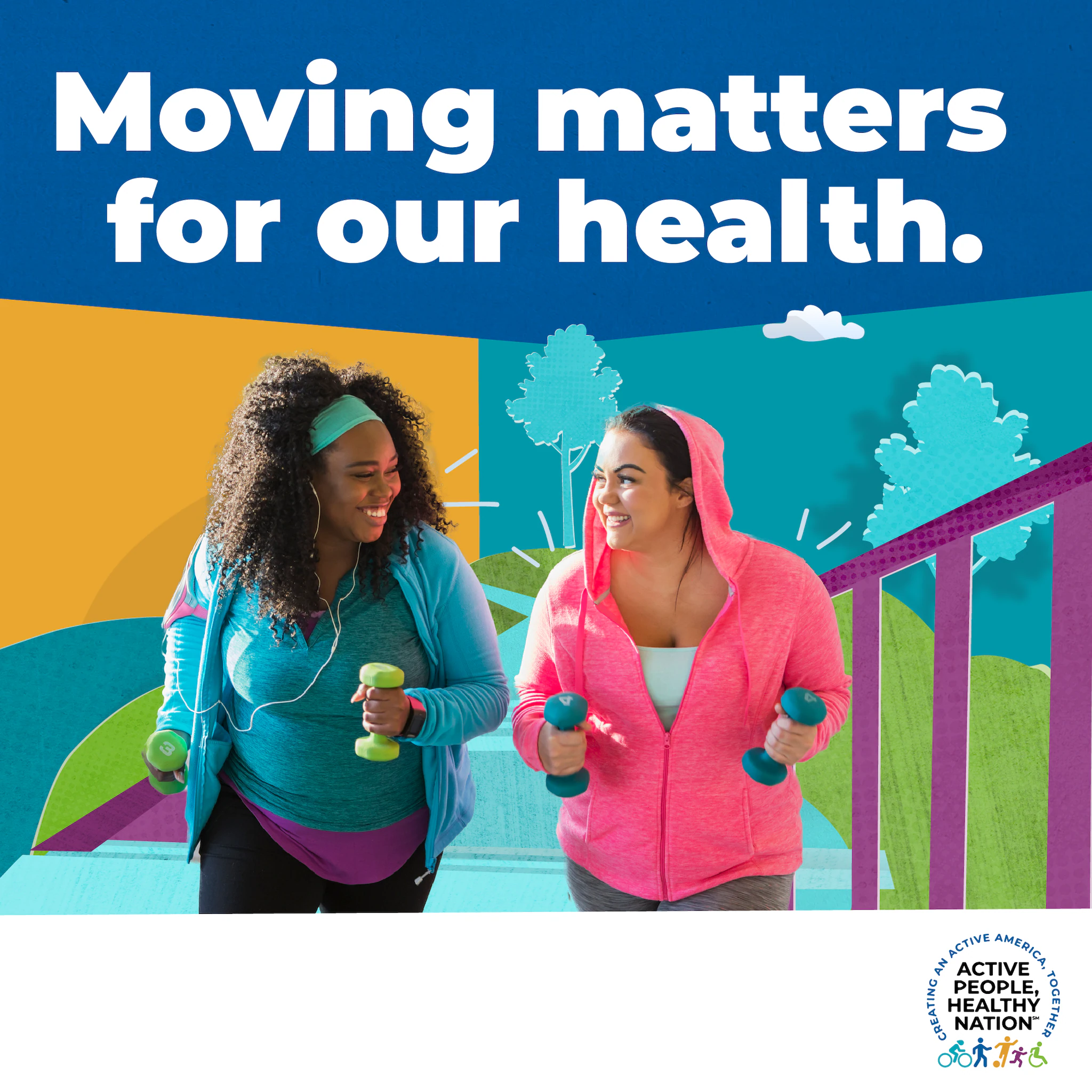
Physical activity can also help with reducing serious health outcomes from infectious diseases like COVID-19, the flu, and pneumonia.
Accompanied by a well-balanced diet, exercise is a proven method of helping you manage or lose weight to maintain a healthy existence.
Increased physical activity has also been known to help improve school performance, reduce stress, and sleep better, leading to a better quality of life.
Mentally, adult physical activity can reduce feelings of anxiety or decrease your risk for depression and anxiety.
On a community level, more physical activity can support the need for more local resources making communities more walkable, which helps boost economies, reduces air pollution, and creates tighter-knit neighborhoods.
In addition to physical activity, children and adults, especially older adults, can benefit from bone and muscle-strengthening activities, which help you perform daily activities like climbing the stairs, grocery shopping, and cleaning the house.
Lastly, regular physical activity can increase your chances of living longer.
“An estimated 110,000 deaths per year could be prevented if US adults ages 40 and older increased their moderate-to-vigorous physical activity,” according to the CDC.
Increasing movement by just 10 more minutes a day can lower your risk for premature death.
Adults younger than 60 can reduce their risk of premature death by getting in 8,000 to 10,000 more steps a day; those older than 60 can benefit from about 6,000 to 8,000 steps a day.
Physical Activity
To achieve the full benefit of physical activity on your health, adults should participate in two forms of movement — aerobic and muscle-strengthening, according to the CDC.
Aerobic physical activity, or “cardio,” involves movements that get you breathing harder and your heart beating faster.
These activities can be done at either a moderate or vigorous intensity, which is measured by how hard you work your body during the activity.
Adults require at least 150 minutes (about 2 and a half hours) of moderate-intensity or 75 minutes of vigorous-intensity physical activity every week, according to the Physical Activity Guidelines for Americans.
In addition to cardio movement, adults will also need to engage in at least 2 days of activities that work your muscles and make them stronger.
Cardio Activity
There are two types of intensities that cardio physical activity can be done at — moderate and vigorous.
Physical activity done at a moderate intensity is designed to get you to breathe harder, break a sweat, and raise your heart rate, and can be completed at a pace where you can still talk.
Examples of moderate intensity activity include, walking at a brisk pace, doing water aerobics, riding a bike, playing doubles tennis, and pushing a lawn mower.
Vigorous-intensity aerobic activity is moderate activity that is turned up a notch in that you breathe harder and faster, and your heart rate is much higher than when you’re engaging in moderate activity.
When you jog or run, swim laps in a pool, ride your back faster or on hills, play singles tennis, or play a game of basketball you are participating in vigorous-intensity aerobics.
If you plan on mixing the two types of activity, a good way to balance is knowing that 1 minute of vigorous activity is roughly the same as 2 minutes of moderate activity.
However, telling the difference between the two can be difficult and depends on the person’s fitness and comfort level, shape, and health condition.
Muscle Activity
Along with aerobic activity, adults need at least 2 days of activities that focus on strengthening the muscles.
To be considered a muscle-strengthening activity, the form of exercise being done should work the major muscle groups in the body — legs, hips, back, chest, abdomen, shoulders, and arms.
Examples of muscle-strengthening activities include lifting weights, working with resistance bands, exercises that use body weight resistance such as push-ups or sit-ups, digging in a garden, and yoga.
These exercises are conducted in a series of repetitive movements known as repetitions. It’s suggested that you do at least 8-12 repetitions, or one set, per activity to maximize health benefits.
Find more activities and physical activity recommendations for your age and/or health condition.
Physical Activity for Children and Teens
Adults aren’t the only ones who require physical activity.
Children also need movement to maintain a healthy lifestyle, and given their developing bodies and minds, need it a little more than adults do.
The CDC recommends that children and teens age 6-17 require at least an hour of physical activity every day in the form of a mixture of aerobic, muscle, and bone-strengthening activities.
To build muscles, children in that age group might do some climbing or pushups and to strengthen muscles, one might run or jump.
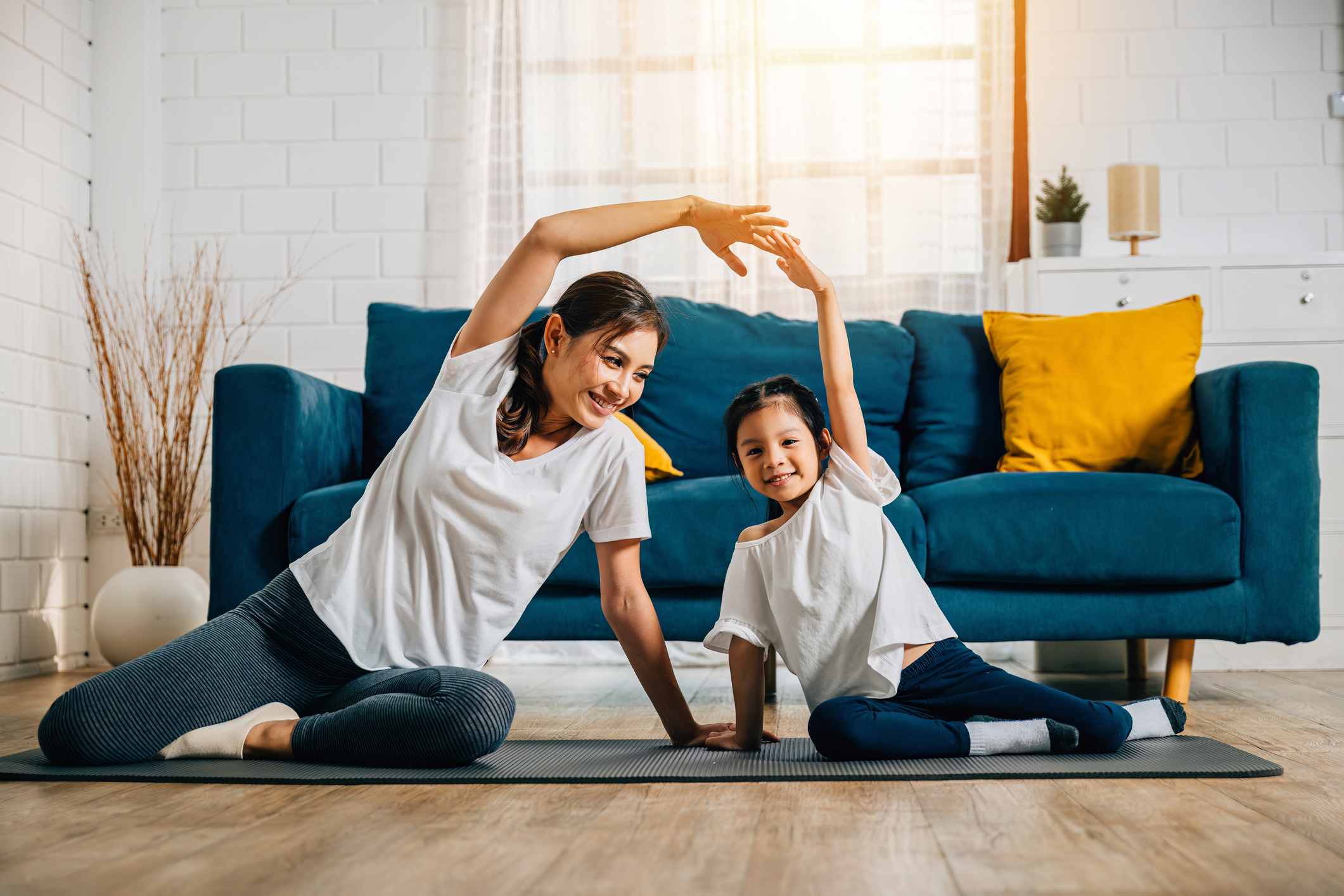
The recommended regimen for children is regular moderate or vigorous-intensity aerobic exercise every day accompanied by muscle and bone-strengthening activity at least 3 times a week.
For moderate aerobic activity, school-age children might enjoy brisk walking, riding a bike on mostly flat surfaces, activities such as hiking, riding a scooter, or swimming, and playing a game of catch.
Moderate aerobic activities for teens might include some of the same activities along with others like kayaking and yard work, such as sweeping or pushing a lawn mower.
Children and teens engaging in more vigorous activities might find themselves running, riding a bike on hills, playing a game involved with running and chasing, jumping rope, practicing marital arts, and participating in sports such as soccer, basketball, swimming, and tennis.
Muscle-strengthening activities for children include games like tug of war, resistance exercises, rope or tree climbing, climbing on playground equipment, and some yoga. Teens may benefit from additional activities like using hand-held weights and weight machines.
To strengthen bones, children and teens can hop, skip, and jump, jump rope, run, and participate in sports that involve a lot of jumping or rapid changes in direction.
Find more activities and physical activity recommendations for your age and/or health condition.
Tips to Help You Get Moving
Making the decision to begin the journey to get your body moving and stay on track is easier said than done.
With work, school, family, and other commitments and responsibilities it can be challenging to get in the recommended weekly physical activity.
There are a multitude of activities and combinations that meet this health benchmark, so make a physical activity schedule that works for your needs and around your timeline.
When getting ready for the week ahead, use the Move Your Way Activity Planner to help you figure out an activity schedule that works for you and track your activity progress in a Physical Activity Diary.
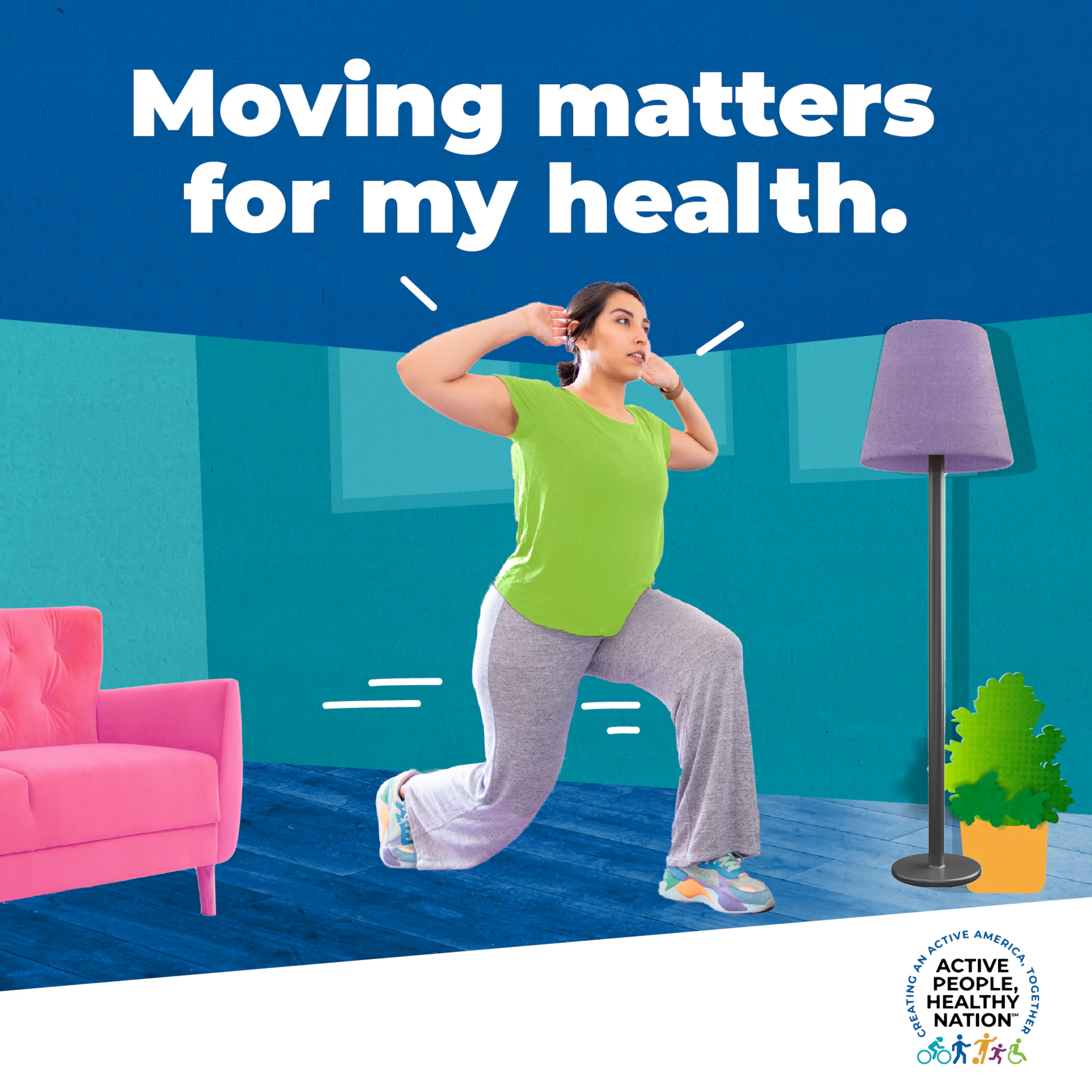
You can also access sample activity schedules on the CDC website.
Knowing where to start can be daunting. CDC suggests beginning with activities you enjoy in locations and at times the work best for your lifestyle.
For instance, you can start with morning walks around the neighborhood or take an online physical activity class after work.
Staying motivated throughout the week can be tough, but you don’t have to go at it alone.
Seek out activities where others are involved or keep your physical activity routine refreshed by trying out free apps or finding new, fun ways to remain active.
Life throws many obstacles in your way, but CDC has tips on how to overcome them.
If you don’t want to be alone, join a hiking group or take a class at your local YMCA.
Too busy with the young ones at home? Turn movement into a family affair by going on walks or doing activities together.
Too tired to put in the effort after a long day at work? Try a few ways to stay active during working hours by taking the stairs instead of the elevator, initiate office physical activity breaks, or check out DeskFit.
For more ways to overcome barriers to weekly physical activity goals visit the CDC website.
Get Your Entire Community Moving
While taking important steps in your own health journey, you can take a few more to help inspire others to do the same.
Download a free Health Equity Report Card from Salud America! today to discover some of the barriers keeping your neighbors from being mobile.
The Health Equity Report Card gives you a customized report of where your community stands on certain issues such as access to healthy food, transportation, and places to play or exercise.
Many of these issues impact the overall health and quality of someone’s life.
This tool also gives you a bigger picture on ways to improve the health of your community by giving you an idea of what neighborhood may benefit from a new park, hiking trail, or paved walkway.
Use the information and visuals contained in the Health Equity Report Card to petition your local government for a new space that will get everyone on their feet!
GET YOUR HEALTH EQUITY REPORT CARD!
The post Get Moving Toward a Healthier You! appeared first on Salud America.

